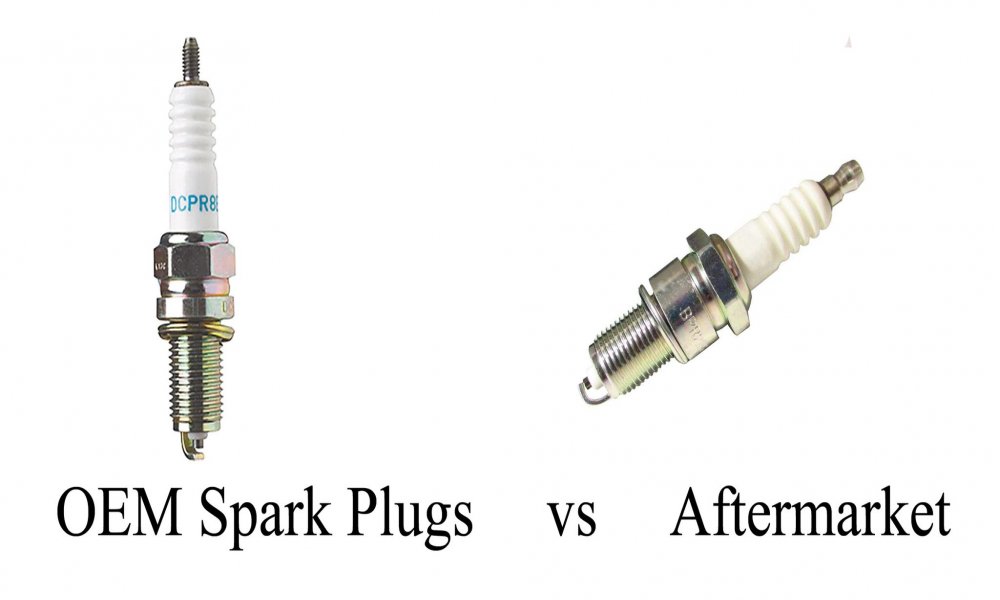The ‘OEM plugs vs. Aftermarket plugs’ is a confusion many people face while purchasing spark plugs for their vehicles. To put it simply, OEM plugs are accurately designed, and sophisticated but expensive. Aftermarket plugs are not as sophisticated as OEMs but are pretty much effective and inexpensive.
The major differences lie in the quality and durability. Aftermarket plugs are made with lower-graded materials with a thin coating. That is what makes them inexpensive. But these plugs are widely used for old cars and for short-term uses. OEM plugs are highly sophisticated but they have fewer options and sometimes it is difficult to purchase them.
OEM plugs are certainly the best option for automobiles but aftermarket plugs are not that awful after all. To save you from further worries in this writing we have detailed the major differences between OEM plugs vs Aftermarket plugs. Hope this will help you to determine your decision.
What Are OEM Plugs?
OEM is a short form of ‘original equipment manufacturer’. The plugs are produced by automobile manufacturers or by the company that makes parts for them. When you buy OEM plugs, you are exactly buying the parts that came with your car. In terms of quality and materials, OEM plugs are at the top. These plugs are not only reliable but also the perfect match for the engine, which is why they are pricey. Companies like BorgWarner, Bosch, TRW, etc. make OEMs.
What Are Aftermarket Plugs?
Aftermarket plugs are manufactured by a third-party company. Industries like Bosch, Denso, Magna International, Continental Automotive, ZF Friedrichshafen, Aisin Seiki, Lear Corporation, and Flex-N-Gate Corporation make aftermarket spark plugs. The main concern of these manufacturers is to provide good products at a low cost. As aftermarket products have a lot of options, one has to remain careful about the fitting measurements specified in the catalog of these plugs.
OEM Plugs vs Aftermarket Plugs: Key differences
| Comparison | OEM Plugs | Aftermarket Plugs |
| Quality | Mainly Three types Copper, Platinum, and Iridium, But also- Double-platinum, Silver-coated, and Double Iridium. | Middle range |
| Durability | Can last longer | Lower than OEM plugs |
| Types | Three types according to materials- Copper, Platinum, and Iridium. | Mainly Three types Copper, Platinum, and Iridium, But also- Double-platinum, Silver-coated, Double Iridium. |
| Coating | Thick | Thin |
| Tolerance | Heavy | Medium-level |
| Companies | BorgWarner, Bosch and TRW | Bosch, Denso, Magna International, Continental Automotive, ZF Friedrichshafen |
| Interference with electrical system | No interference | Low level of interference |
| Gap | Accurately gapped | Has some gap inconsistencies |
OEM Plugs vs. Aftermarket Plugs: Major Differences
- Electrode: This component is designed in a certain way to improve performance and fuel efficiency. The electrode in OEM spark plugs is created with exact dimensions and shape, however dimensions in aftermarket parts are hardly made with complete accuracy, and they are also not as effective in saving fuel efficiency as OEM parts.
- Insulator: The insulator of a spark plug is composed of ceramic; the ceramic coating on aftermarket plugs is generally weak, whereas OEM plugs have a stronger ceramic insulator coating.
- Materials: OEM plugs are coated with a pure platinum-iridium alloy and have nickel-plated threads. The platinum-iridium alloy in the tip keeps it from wearing out. Aftermarket spark plugs are crafted with lesser-grade materials, which causes them to wear out quickly.
- Fittings: Fitting inconsistency is another major distinction. Since the design varies in OEM and aftermarket plugs, getting the optimum fit from aftermarket sometimes becomes tough. OEMs are precisely gapped, so they do not need gapping before installation. Aftermarket plugs, on the other hand, might need to be gapped.
Pros and Cons of OEM Plugs vs. Aftermarket Plugs
Pros
| OEM Plugs | Aftermarket Plugs |
| Affordable Easy to purchase, Great for the short term, needs More options, effective performance | Affordable Easy to purchase, Great for the short term, need More options, effective performance |
Cons
| OEM Plugs | Aftermarket Plugs |
| Comparatively expensive, Not always purchasable, Have fewer options | Vulnerable and made up with cheap materials, increases fuel economy |
Which One is Better?
This response varies from person to person. We all know that OEM plugs are the best ones in terms of quality and fitness. However, if you need a spark plug for an old automobile or have a limited budget, you can always go for aftermarket plugs.
To conclude
There is no definitive answer to the ‘OEM plugs vs. Aftermarket plugs’ confusion. The major differences are in quality and durability. Though OEM plugs are in good shape from every side, aftermarket plugs are not obsolete as well. They might not be as effective or long-lasting as OEMs but they serve their purpose beautifully. However, you should remain careful while purchasing aftermarket plugs as they vary in their designs and sizes.
See also:
- ACDelco Vs Champion Spark Plugs: Major Differences
- Spark Plug Vs Glow Plug – Comparison With a Table
- Spark Plug Vs Ignition Coil: The Major Differences
- Champion Spark Plugs Vs NGK – What Are the Major Differences?
- Performance Spark Plugs Vs Regular Spark Plugs
- Copper Vs Iridium Spark Plugs (With Pros & Cons)

